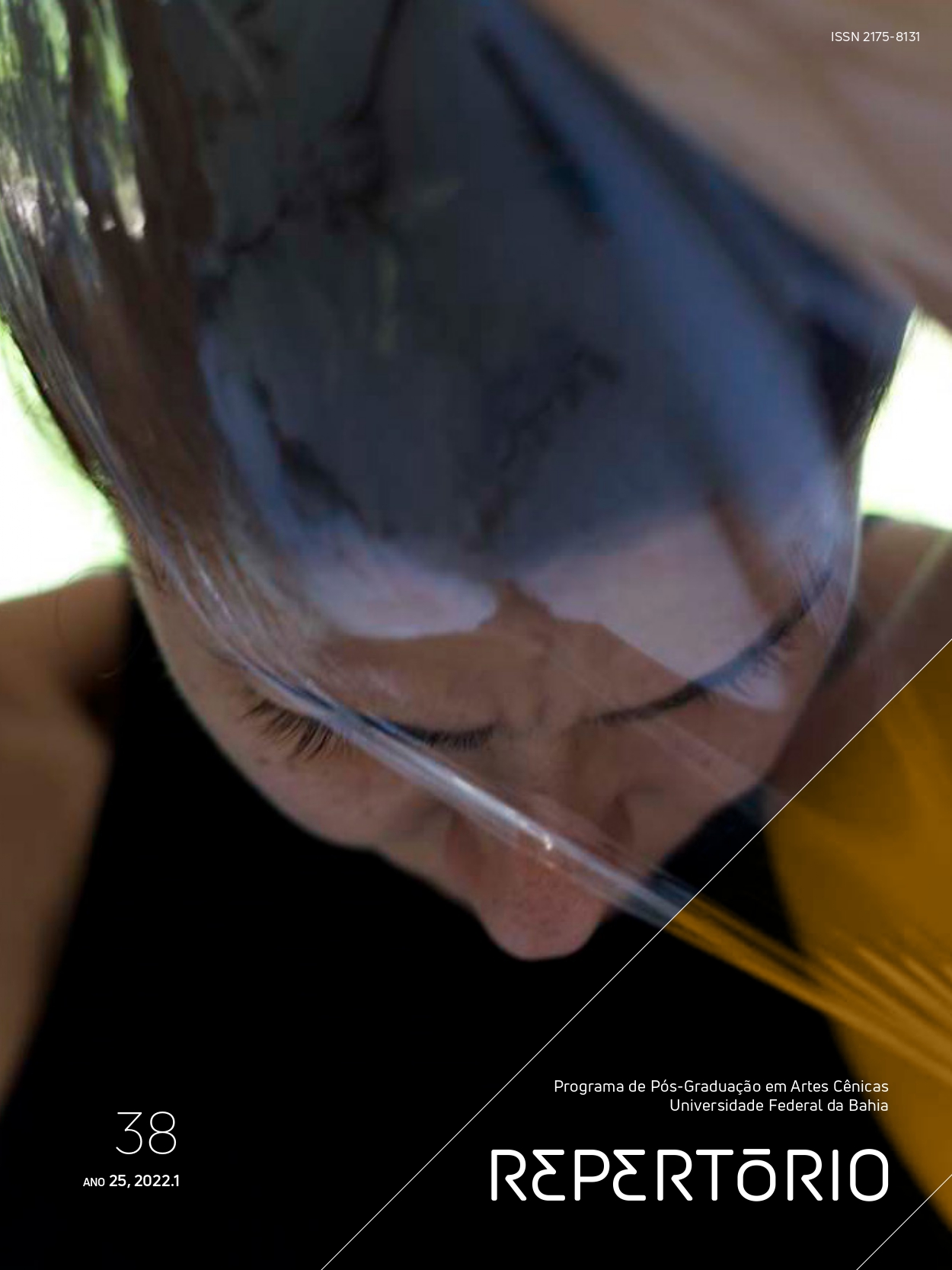Participatory Sense-Making in Dance Improvisation
DOI:
https://doi.org/10.9771/rr.v1i38.48558Palavras-chave:
Improvisation, human interaction dynamics, interactive synchrony, participatory sensemakingResumo
A produção de sentido participativa (PSM) fornece uma rica estrutura teórica para teorias em cognição social, fornecendo uma base para hipóteses que ainda precisam ser testadas experimentalmente. Particularmente, estamos interessados em explorar quando surge a sincronia entre os agentes participantes nas interações sociais. Além disso, pretendemos ver se alterar as experiências perceptivas dos agentes influencia sua capacidade de coordenar suas intenções e comportamentos. Propomos um experimento comportamental que faz uso de um paradigma existente de improvisação em dança para obter medidas de comportamento coordenado que surge espontaneamente. Em seguida, propomos métodos de análise, incluindo sincronia de fase instantânea, para traduzir as observações comportamentais em medidas significativas de coordenação. Em seguida, apresentamos nossos resultados esperados e discutimos como eles podem contribuir para o conhecimento existente em cognição social. Além disso, exploramos as implicações de resultados que não suportam nossa hipótese, fornecendo sugestões para direções futuras no teste de hipóteses propostas pelo PSM.
Downloads
Referências
CHEONG, J. H., Four ways to quantify synchrony between time series data. (2020). Accessed 18/03/2022: https://towardsdatascience.com/four-ways-to-quantify-synchrony-between-time-series-data-b99136c4a9c9 doi: 10.17605/OSF.IO/BA3NY
DE JAEGHER, H., & DI PAOLO, E., Participatory sense-making. Phenomenology and the cognitive sciences, 6(4), 485-507. (2007) doi: 10.1007/s11097-007-9076-9
ENGEL, A. K., FRIES, P., & SINGER, W., Dynamic predictions: oscillations and synchrony in top–down processing. Nature Reviews Neuroscience, 2(10), 704-716. (2001) doi: 10.1038/35094565
GALBUSERA, L., FINN, M. T., & FUCHS, T., Interactional synchrony and negative symptoms: An outcome study of body-oriented psychotherapy for schizophrenia. Psychotherapy Research, 28(3), 457-469. (2018) doi: 10.1080/10503307.2016.1216624
HIRSCH, J., ZHANG, X., NOAH, J. A., & ONO, Y., Frontal temporal and parietal systems synchronize within and across brains during live eye-to-eye contact. Neuroimage, 157, 314-330. (2017) doi: 10.1016/j.neuroimage.2017.06.018
KELLEY, M. S., NOAH, J. A., ZHANG, X., SCASSELLATI, B., & HIRSCH, J., Comparison of human social brain activity during eye-contact with another human and a humanoid robot. Frontiers in Robotics and AI, 209. (2021) doi: 10.3389/frobt.2020.599581
KOIKE, T., SUMIYA, M., NAKAGAWA, E., OKAZAKI, S., & SADATO, N., What makes eye contact special? Neural substrates of on-line mutual eye-gaze: a hyperscanning fMRI study. Eneuro, 6(1). (2019) doi: 10.1523/ENEURO.0284-18.2019
LYRE, H., Socially extended cognition and shared intentionality. Frontiers in Psychology, 9, 831. (2018) doi: 10.3389/fpsyg.2018.00831
NOAH, J. A., ZHANG, X., DRAVIDA, S., ONO, Y., NAPLES, A., MCPARTLAND, J. C., & HIRSCH, J., Real-time eye-to-eye contact is associated with cross-brain neural coupling in angular gyrus. Frontiers in human neuroscience, 14, 19. (2020) doi: 10.3389/fnhum.2020.00019
PEÑA, N., CREDIDIO, B. C., CORRÊA, L. P. N. R. M., FRANÇA, L. G. S., CUNHA, M. D. V., SOUSA, M. C. D., ... & MIRANDA, J. G. V., Free instrument for measurements of motion. Revista Brasileira de Ensino de Física, 35(3), 1-5. (2013)
SANTANA, I., MIRANDA, J.G., RAMOS, Y.E., Analysis of improvisation processes from dynamic systems. Proceedings of the Interdisciplinary Meeting of Dance, Body, and Technology, Salvador: UFBA, Brazil. (2021)
TOGNOLI, E., & KELSO, J. A., The coordination dynamics of social neuromarkers. Frontiers in Human Neuroscience, 9, 563. (2015) doi: 10.3389/fnhum.2015.00563
TOGNOLI, E., ZHANG, M., FUCHS, A., BEETLE, C., & KELSO, J. A., Coordination dynamics: a foundation for understanding social behavior. Frontiers in Human Neuroscience, 317. (2020) doi: 10.3389/fnhum.2020.00317
WHEATLEY, T., BONCZ, A., TONI, I., & STOLK, A., Beyond the isolated brain: the promise and challenge of interacting minds. Neuron, 103(2), 186-188. (2019) doi: 10.1016/j.neuron.2019.05.009
WHEATLEY, T., KANG, O., PARKINSON, C., & LOOSER, C. E., From mind perception to mental connection: Synchrony as a mechanism for social understanding. Social and Personality Psychology Compass, 6(8), 589-606. (2012) doi: 10.1111/j.1751-9004.2012.00450.x
WOHLTJEN, S., & WHEATLEY, T., Eye Contact Is A Marker of Alignment in Conversation. (2020)
WOHLTJEN, S., & WHEATLEY, T., Eye contact marks the rise and fall of shared attention in conversation. Proceedings of the National Academy of Sciences, 118(37). (2021) doi: 10.1073/pnas.2106645118
Downloads
Publicado
Como Citar
Edição
Seção
Licença
Copyright (c) 2022 Lochlan Walsh, Paige Whitehead, Rebecca Todd

Este trabalho está licenciado sob uma licença Creative Commons Attribution 4.0 International License.
Os/as usuários/as poderão ler, baixar, copiar, distribuir, imprimir os textos integralmente desde que sejam claramente mencionadas as referências aos/às autores/as e à Revista Repertório. A utilização dos textos em outros modos depende da aprovação dos/as autores/as e deste periódico.
Os conteúdos emitidos em textos publicados são de responsabilidade exclusiva de seus/suas autores/as e não refletem necessariamente as opiniões da Revista Repertório.








